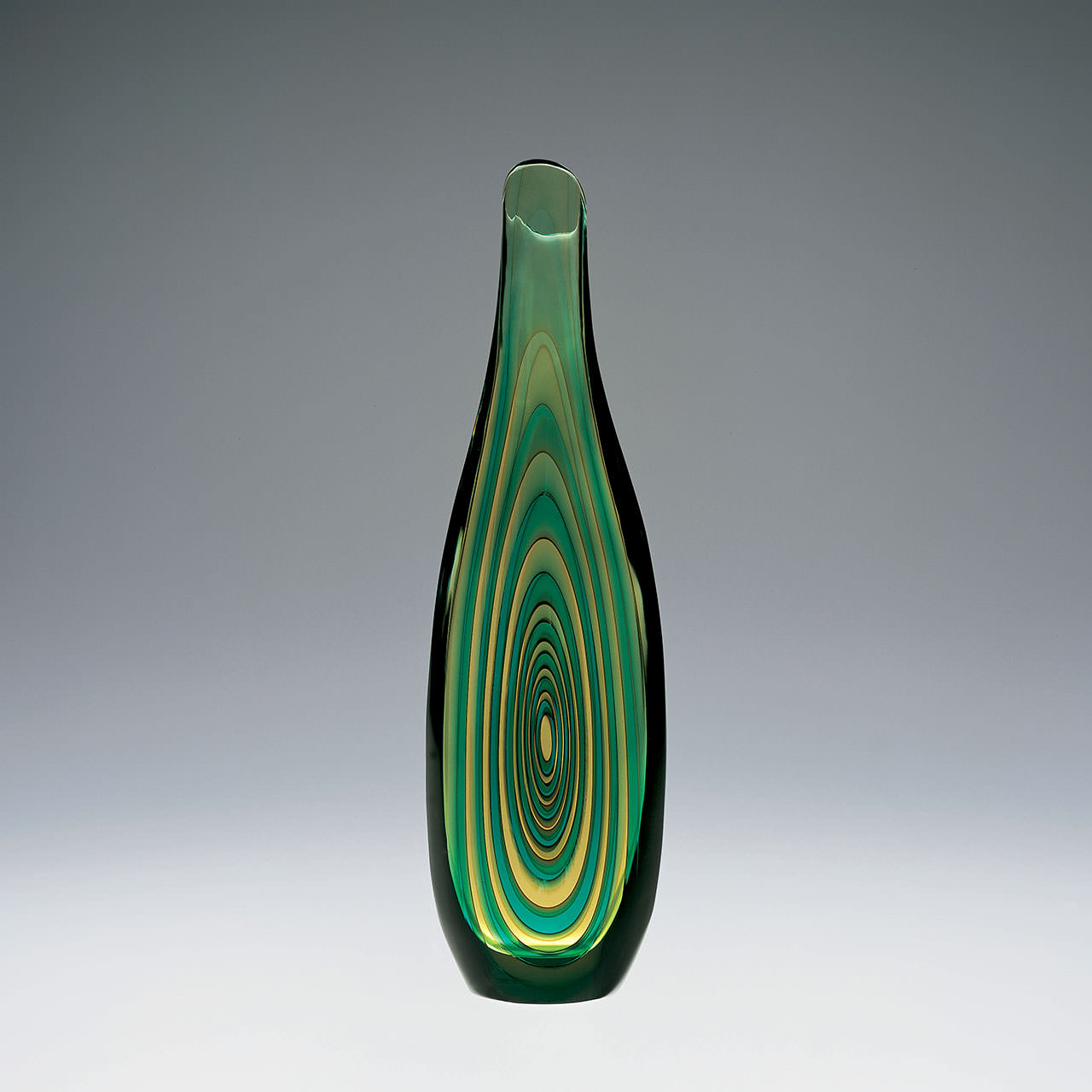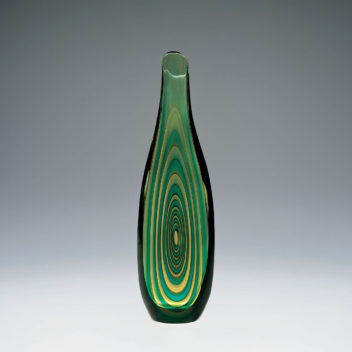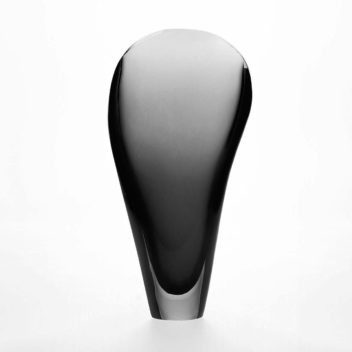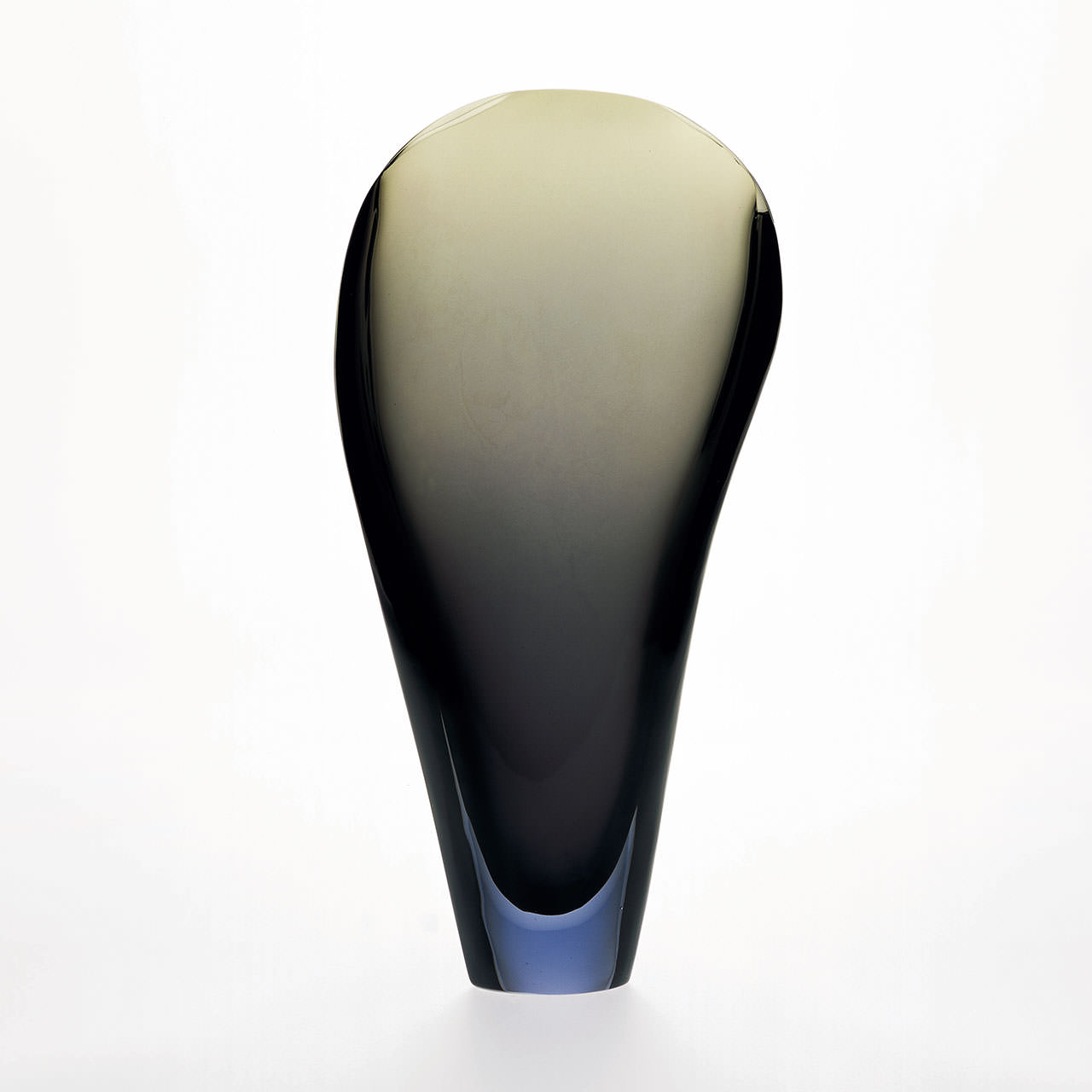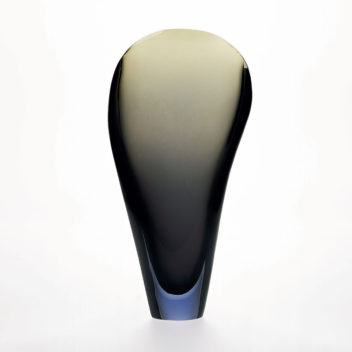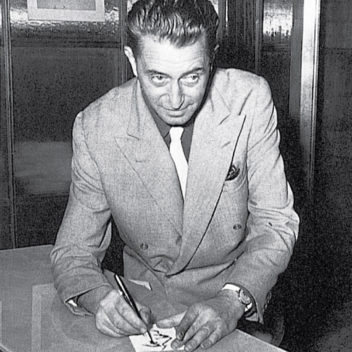
Flavio Poli 1900–1984
A designer, businessman, and ceramic artist, Flavio Poli was born in Chioggia. He attended the Istituto d’Arte di Venezia and began work as a designer in ceramics. In 1929 he switched to glass and designed animals, splendid Novecento-style nude figures in massiccio glass, as well as bowls and urns with figures resting on the inside, on lids or as handles for Libero Vitali’s I.V.A.M. He subsequently collaborated with the Compagnia di Venezia e Murano, with the furnace of Mario and Lino Nason, and with the engraver Gino Francesconi. In 1934, he accepted the artistic direction of Barovier, Seguso & Ferro, later to become Seguso Vetri d’Arte, and became partner three years later. Together with Archimede Seguso, maestro of the principal team, Poli authored grandiose lighting installations, corroded vessels, sculptures in bulicante glass, and animals in massiccio glass. These productions represented a milestone in the development of the glassworks of Murano. At the height of his artistic maturity, in the years between 1950 and 1960, he designed a series of sommerso glass pieces in a Nordic style—essential forms and sharp cold colors—which were awarded prestigious prizes (Compasso d’Oro). He left Seguso in 1963 and between 1964 and 1966, he organized the artistic glass division at the Società Veneziana di Conterie e Cristallerie.
